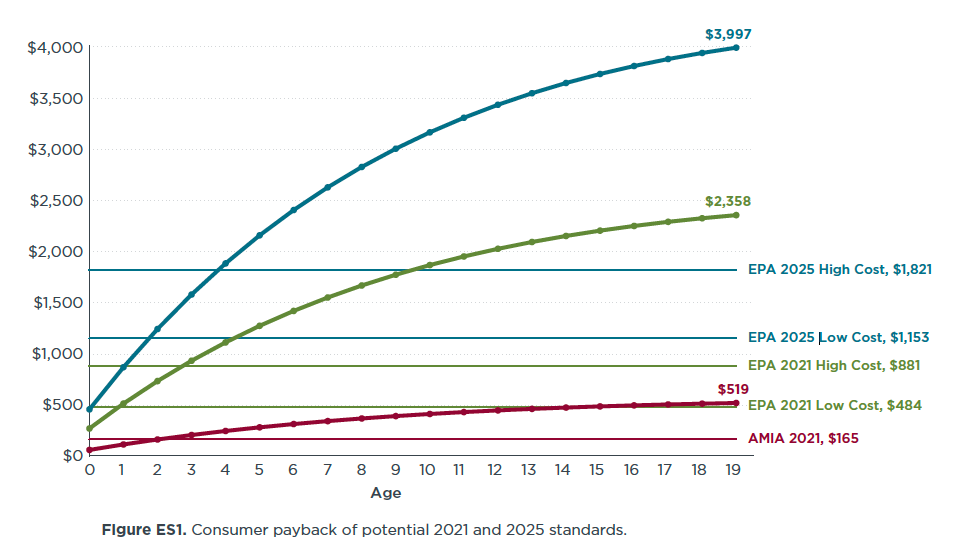White paper
Evaluation of next-phase greenhouse gas regulations for passenger vehicles in Mexico
Stringent standards for passenger vehicle GHG emissions will help meet Mexico’s climate goals and increase energy security, and will have tremendous benefits for consumers and society alike. Aligning standards with the rest of North America builds off the well-integrated vehicle market and the shared elements of regulatory design already in place. As the rapid pace of technology improvement brings costs down, it is clear that Mexico will benefit from the adoption of long-term, stringent standards, which should also enable the Mexican auto industry to remain competitive in other regulated or fuel price–sensitive markets. This analysis demonstrates the potential to dramatically reduce fuel consumption and GHG emissions from the light-duty vehicle fleet in Mexico, with clear and substantial savings for consumers and benefits to society. Careful regulatory design is critical to ensure that regulatory goals are achieved and consumer benefits are realized.
To support the adoption of a strong regulatory package in Mexico, this report evaluates the costs and benefits of extending Mexico’s program to 2025 by fully aligning with U.S. standards. EPA’s Optimization Model for Reducing Emissions of Greenhouse Gases from Automobiles (OMEGA) was adapted to evaluate the cost of technology needed to meet these standards, taking into account the characteristics of Mexico’s existing new light-duty vehicle fleet. This assessment goes further than EPA’s technology assessment developed in support of the midterm evaluation of the second phase (2022 through 2025) of light-duty vehicle GHG standards by including a second technology package and cost dataset that encompasses even more recent research on emerging technologies, including cylinder deactivation, hybridization, lightweighting, and electric vehicles. This second dataset, developed by the ICCT, fully captures the falling compliance costs associated with emerging non-electric technologies that are expanding the internal combustion engine efficiency frontier.
Scenarios for adoption of EPA 2021 and EPA 2025 standards were based on full harmonization with EPA standards, including all credit provisions. For comparison, the costs and benefits of adoption of a 2021 standard proposed by the Association of the Mexican Automotive Industry (AMIA) were also evaluated, including full adoption of the proposed credit provisions. This comparison clearly demonstrates the importance of regulatory design, especially concerning manufacturer flexibilities in the form of credits. Well-designed credits should offer the automakers flexibility to choose the lowest-cost option to comply with the standards while still producing real GHG reductions. The EPA program allows automakers credit for the adoption of technologies that will result in real GHG savings (and, in many cases, fuel economy savings) that are not apparent on the official test cycle. Credit programs that are poorly designed simply weaken the standards without achieving real GHG or fuel economy benefits.
The most stringent scenario, adoption of the full EPA regulatory program out to 2025, would achieve a model year 2025 fleet-average test cycle fuel economy of 22 km/liter and emissions of 108 gCO2/km, with fleet-average costs per vehicle between $1,153 and $1,821, similar to the anticipated costs in the rest of the North American market. Adoption of 2025 standards could reduce fleet-average energy consumption on the test cycle by 28% from 2016 levels. Considering the additional improvements made to reduce emissions off the test cycle and to reduce GHG gases from air conditioning refrigerants, this would represent a 38% reduction in fleet-average GHG emissions with respect to 2016.
As seen in Figure ES1, the average new vehicle sold in 2025 would save consumers $4,000 (72,000 MXN) over 20 years, equivalent to 2.2 to 3.5 times the cost of additional vehicle technology, with net savings of $2,000 to $3,000.2 And even more substantial benefits to society are possible. Accounting for both the fuel savings and the climate benefits, the savings to society for a single model year (2025) would be 6 billion to 11 billion USD, with cumulative benefits from model years 2018 through 2025 on the order of 25 billion to 50 billion USD.
The technology projections show that the technology changes needed to reach the most ambitious targets will depend largely on improvements to the internal combustion engine—including the adoption of turbocharged and downsized GDI (gasoline direct injection) engines and high-compression Atkinson-cycle engines, with further improvement of technologies such as cylinder deactivation—as well as more efficient transmissions. Even under the most stringent scenario considered, only minimal amounts of electrification of the powertrain would be needed. Looking out to 2025, full harmonization with EPA standards would require full electrification of 1% to 3% of the Mexican fleet, involving only a few vehicle segments. While start-stop systems and mild hybrids have very low penetration rates across most scenarios, the highly congested traffic of Mexico City might drive higher rates of deployment for these options than are forecast in this analysis.

